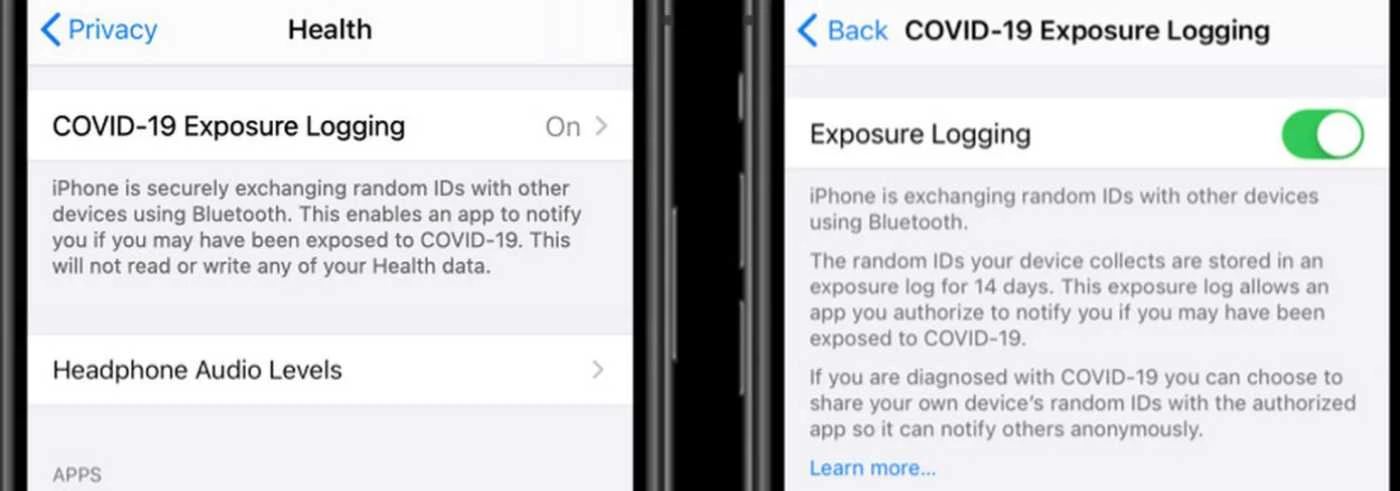Apple has released iOS 13.5, which includes improved Face ID recognition of protective masks and support for the Exposure Notification API that it co-created with Google to support public health authorities in their contact-tracing efforts to combat COVID-19.
The API requires third-party apps developed by approved public health authorities for use, but iOS device users now have access to COVID-19 Exposure Logging global settings.
You can access the Exposure Logging settings under the Settings app, then navigate to the Privacy subsection. From there, you can select the Health submenu and find the COVID-19 Exposure Logging setting, which will be off be default.

It can’t be turned on at all until you get an authorized app to enable them, at which point you’ll receive a pop-up asking you to authorize Exposure Notifications access. Once you do, you can return here to toggle notifications off, and also manually delete your device’s exposure log should you choose to opt out.
At launch, Apple and Google said public health officials in 22 countries on five continents around the world have received access to the API. To drive adoption rates, Apple and Google want one app per country, but they are also working with large countries like the U.S. to create a regional approach.
Key changes made to the Exposure Notification API based on feedback from public health agencies include:
- Public health agencies can define what constitutes an exposure event
- Public health agencies can determine the number of exposure events a person has had
- Transmission risk of positive cases can be factored into the definition of an exposure event
- Public health agencies can contact exposed users based on a combination fo the API and data that users voluntarily choose to input into the app
Apple and Google also say that they have made further privacy enhancements to the Exposure Notification API:
- Temporary Exposure Keys are now generated randomly instead of being derived from a tracing key
- All metadata associated with Bluetooth is now encrypted to make it more difficult to identify a person
In addition to the first version of the Exposure Notification API, iOS 13.5 also includes a few other changes. With the update, your iPhone or iPad will now skip Face ID authentication and skip directly to the passcode screen if it detects you are wearing a mask. You can also now disable the automatic face zooming feature in a Group FaceTime call.
iOS 13.5
iOS 13.5 speeds up access to the passcode field on devices with Face ID when you are wearing a face mask and introduces the Exposure Notification API to support COVID-19 contact tracing apps from public health authorities. This update also introduces an option to control automatic prominence of video tiles on Group FaceTime calls and includes bug fixes and other improvements.
Face ID and Passcode
- Simplified unlock process for devices with Face ID when you are wearing a face mask
- Passcode field automatically presented after swiping up from the bottom of the Lock screen when you are wearing a face mask
- Also works when authenticating with the App Store, Apple Books, Apple Pay, iTunes, and other apps that support signing in with Face ID
Exposure Notification
- Exposure Notification API to support COVID-19 contact tracing apps from public health authorities
FaceTime
- Option to control automatic prominence on Group FaceTime calls so video tiles do not change size when a participant speaks
Emergency Services
- Option to automatically share health and other essential information from your Medical ID with emergency services when you place an emergency call (US only)
Bug fixes and other improvements
- Fixes an issue where users may see a black screen when trying to play streaming video from some websites
- Addresses an issue in the share sheet where suggestions and actions may not load


